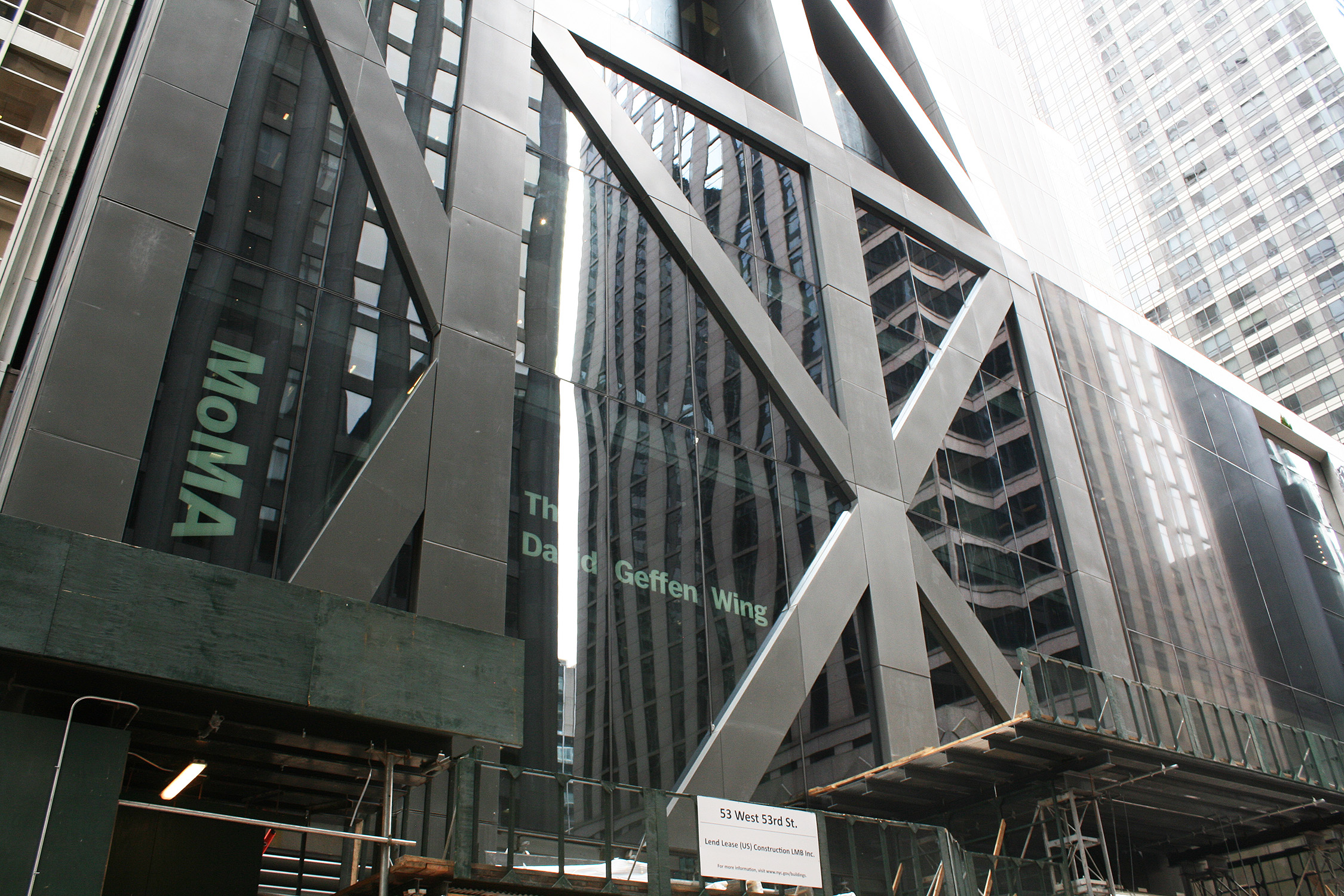
The Museum of Modern Art in New York was reopened after four months of renovation work and featuring the new “David Geffen Wing”.
Billboard
Skyscrapper
Halfpage
Bigger, more beautiful, more expensive: The Museum of Modern Art in New York was reopened after four months of renovation work and featuring the new “David Geffen Wing” worth 450 million.
The wing is named after the Californian music billionaire, who donated 100 million dollars for the reconstruction (David Rockefeller, whose mother Abby Aldrich founded the museum 90 years ago, contributed 200 million dollars). Constructed on the western side of the building on West 53rd Street, the wing extends to the basements of a high-rise apartment building by Jean Nouvel that was built at the same time. The site of the American Folk Art Museum had to give way to it – very much to the annoyance of the preservationists. This is no surprise for a museum connected to the Who’s Who of New York’s real-estate industry (the American Folk Art Museum itself is nowadays located at Columbus Circle).
The reconstruction increases the exhibition surface of one of the world’s biggest art museums by one third, about 5,000 square kilometres. The MoMA now comprises more than 60 galleries on six floors, a continuous sequence of rooms. The architects are Diller Scofidio + Renfro, known for the “Highline” and the Lincoln Center renovation, along with global design and architecture firm Gensler.
Almost like an Apple store?
Not everyone is completely thrilled. Michael Kimmelman, the New York Times architecture critic, described the construction as intelligent and precise, almost like an Apple store, yet “slightly soulless”. The MoMA would have turned the block into a canyon of steel and glass, bringing to mind the “headquarters of Darth Vader’s hedge fund”. Only the façade is dark, though. On the inside, the new construction is flooded with light; the galleries, a series of bright rooms grouped around the lobby, provide views of the sculpture garden. The lobby has been expanded as well; visitors no longer enter the museum through a dark corridor, but through a bright hall. Moreover, a display window has been fitted, allowing passers-by to catch a glimpse of the exhibits. There’s also a terrace restaurant on the sixth floor.
A continuous rotation
The extension was vital, since the museum has been overcrowded with three million visitors a year. Moreover, it enables a new way of presenting the art exhibits. From now on, the galleries are going to be mixed up every six months and supplemented by existing properties as well as new acquisitions; a continuous rotation. The MoMA incorporates an enormous collection of 140,000 art objects, most of which have been tucked away in the archive so far. The rotation will involve a great deal of work by the curators, in addition to good orientation skills by the visitors.
Medium Rectangle
Halfpage
All Photos by Eva Schweitzer
Strengthen the presence of artists
As in the past, architecture continues to be one of MoMA’s key areas. It is present through all forms of media and expression, from paintings to drawings, sculptures, installations, infinite video loops, film excerpts and sound elements. The exhibits include pieces from the Frank Lloyd Wright collection, for instance, such as a model of the Guggenheim Museum, situated at Central Park. Another gallery showcases Marcel Duchamp. One room is dedicated to the 1930s modernism, with posters from Fritz Lang’s “Metropolis”, film excerpts from “Berlin – Symphony of a Metropolis”, the outline of Mies van der Rohe’s envisaged tower at the Berlin Friedrichstraße, as well as drawings by El Lissitzky and city models by Le Corbusier. Moreover, it includes an exemplar of the Frankfurt kitchen by Margarete Schütte-Lihotzky. The museum aims to strengthen the presence of artists. While the larger part of the new MoMA consists of existing properties, it also features some new acquisitions, such as a room-high sculpture by artist Sheila Hicks.
The museum now also merges art across time periods and continents. Vincent van Gogh’s “The Starry Night” was placed in contrast to the writhing clay pots by George Ohr from Mississippi, the “Mad Potter of Biloxi”. And Pablo Picasso’s “Les Demoiselles d’Avignon” is now positioned next to a painting of the American artist Faith Ringgold, depicting the race riots in New York’s Harlem district in the 1960s.
Not the last one
Originally, Elizabeth Diller was supposed to build the new MoMA, but the museum did not favour her large-size concept. The extension by Diller Scofidio + Renfro hasn’t been the first one since its foundation in 1939, when the building was only six storeys tall and clad in marble. Through several phases, the museum has taken up almost the entire block in Manhattan, including a residential tower for affluent New Yorkers. Philip Johnson built here in the sixties, then Cesar Pelli. The last rebuilding was carried out in 2004 by the Japanese architect Yoshio Taniguchi. Presumably, this reconstruction won’t be the last one either.

















